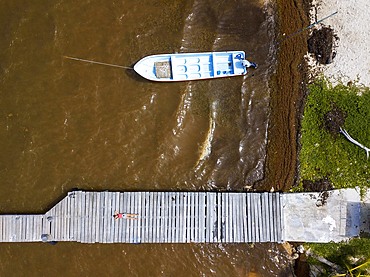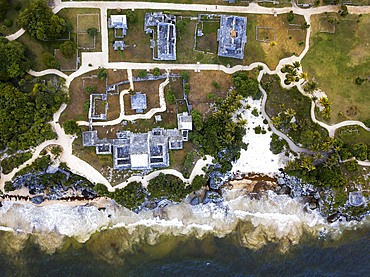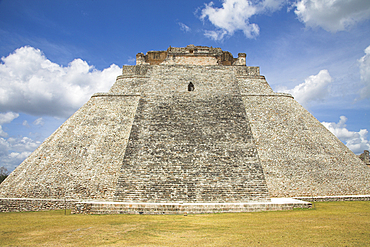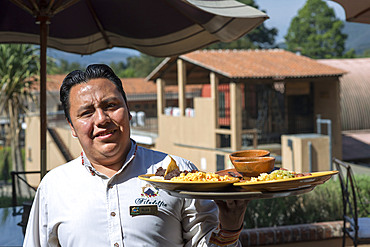Recent searches
Loading...
832-404269 - Sunset at the spectacular Chichen Itza Pyramid in the province of Cancun. Mexico
832-404187 - Beautiful pyramid of Chichen Itza UNESCO heritage. Yucatan, Mexico, Central America
1350-6636 - Aerial view of Mayan Ruin of Chichen Itza Archaeological Site Yucatan Peninsula, Quintana Roo, Caribbean Coast, Mexico
1350-6635 - Aerial view of Mayan Ruin of Chichen Itza Archaeological Site Yucatan Peninsula, Quintana Roo, Caribbean Coast, Mexico
1350-6630 - Swimming at Cenote Ik Kil in Yucatan, Mexico, a natural pit, or sinkhole near Chichen Itza. Yucatan Peninsula, Quintana Roo, Mexico. Ik Kil was sacred to the Mayans who used this cenote for both relaxation and ritual services centuries ago.
1350-6633 - Gran Cenote de Tulum in Yucatan Peninsula, Quintana Roo, Mexico. There are thousands of cenotes dotted all over Mexico���s Yucatan Peninsula, and their existence is as much a defining characteristic of the region as is the distinct geological feature from which they result. Once revered by the ancient Mayans as sacred wells, they are now magnets for tourists, adventurers, and explorers alike.
1350-6628 - Cenote Ik Kil in Yucatan, Mexico, a natural pit, or sinkhole near Chichen Itza. Yucatan Peninsula, Quintana Roo, Mexico. Ik Kil was sacred to the Mayans who used this cenote for both relaxation and ritual services centuries ago.
1350-6627 - Aerial view of Punta Allen Sian Ka'an Reserve, Yucatan Peninsula, Mexico. Red lagoon near Boca Paila Bridge.
In the language of the Mayan peoples who once inhabited this region, Sian Ka'an means Origin of the Sky. Located on the east coast of the Yucatán peninsula, this biosphere reserve contains tropical forests, mangroves and marshes, as well as a large marine section intersected by a barrier reef. It provides a habitat for a remarkably rich flora and a fauna comprising more than 300 species of birds, as well as a large number of the region's characteristic terrestrial vertebrates, which cohabit in the diverse environment formed by its complex hydrological system.
Along its roughly 120 kilometres of coastline, the property covers over 400,000 hectares of land ranging from sea level to only ten m.a.s.l. The property boasts diverse tropical forests, palm savannah, one of the most pristine wetlands in the region, lagoons, extensive mangrove stands, as well as sandy beaches and dunes. The 120,000 hectares of marine area protect a valuable part of the Mesoamerican Barrier Reef and seagrass beds in the shallow bays. The lush green of the forests and the many shades of blue of the lagoons and the Caribbean Sea under a wide sky offer fascinating visual impressions.
1350-6623 - Aerial view of Punta Allen Sian Ka'an Reserve, Yucatan Peninsula, Mexico. Red lagoon near Boca Paila Bridge.
In the language of the Mayan peoples who once inhabited this region, Sian Ka'an means Origin of the Sky. Located on the east coast of the Yucatán peninsula, this biosphere reserve contains tropical forests, mangroves and marshes, as well as a large marine section intersected by a barrier reef. It provides a habitat for a remarkably rich flora and a fauna comprising more than 300 species of birds, as well as a large number of the region's characteristic terrestrial vertebrates, which cohabit in the diverse environment formed by its complex hydrological system.
Along its roughly 120 kilometres of coastline, the property covers over 400,000 hectares of land ranging from sea level to only ten m.a.s.l. The property boasts diverse tropical forests, palm savannah, one of the most pristine wetlands in the region, lagoons, extensive mangrove stands, as well as sandy beaches and dunes. The 120,000 hectares of marine area protect a valuable part of the Mesoamerican Barrier Reef and seagrass beds in the shallow bays. The lush green of the forests and the many shades of blue of the lagoons and the Caribbean Sea under a wide sky offer fascinating visual impressions.
1350-6625 - Aerial view of Punta Allen Sian Ka'an Reserve, Yucatan Peninsula, Mexico. Red lagoon near Boca Paila Bridge.
In the language of the Mayan peoples who once inhabited this region, Sian Ka'an means Origin of the Sky. Located on the east coast of the Yucatán peninsula, this biosphere reserve contains tropical forests, mangroves and marshes, as well as a large marine section intersected by a barrier reef. It provides a habitat for a remarkably rich flora and a fauna comprising more than 300 species of birds, as well as a large number of the region's characteristic terrestrial vertebrates, which cohabit in the diverse environment formed by its complex hydrological system.
Along its roughly 120 kilometres of coastline, the property covers over 400,000 hectares of land ranging from sea level to only ten m.a.s.l. The property boasts diverse tropical forests, palm savannah, one of the most pristine wetlands in the region, lagoons, extensive mangrove stands, as well as sandy beaches and dunes. The 120,000 hectares of marine area protect a valuable part of the Mesoamerican Barrier Reef and seagrass beds in the shallow bays. The lush green of the forests and the many shades of blue of the lagoons and the Caribbean Sea under a wide sky offer fascinating visual impressions.
1350-6620 - Aerial view of Punta Allen Sian Ka'an Reserve, Yucatan Peninsula, Mexico. Red lagoon near Boca Paila Bridge.
In the language of the Mayan peoples who once inhabited this region, Sian Ka'an means Origin of the Sky. Located on the east coast of the Yucatán peninsula, this biosphere reserve contains tropical forests, mangroves and marshes, as well as a large marine section intersected by a barrier reef. It provides a habitat for a remarkably rich flora and a fauna comprising more than 300 species of birds, as well as a large number of the region's characteristic terrestrial vertebrates, which cohabit in the diverse environment formed by its complex hydrological system.
Along its roughly 120 kilometres of coastline, the property covers over 400,000 hectares of land ranging from sea level to only ten m.a.s.l. The property boasts diverse tropical forests, palm savannah, one of the most pristine wetlands in the region, lagoons, extensive mangrove stands, as well as sandy beaches and dunes. The 120,000 hectares of marine area protect a valuable part of the Mesoamerican Barrier Reef and seagrass beds in the shallow bays. The lush green of the forests and the many shades of blue of the lagoons and the Caribbean Sea under a wide sky offer fascinating visual impressions.
1350-6616 - Aerial view of Punta Allen Sian Ka'an Reserve, Yucatan Peninsula, Mexico.
In the language of the Mayan peoples who once inhabited this region, Sian Ka'an means Origin of the Sky. Located on the east coast of the Yucatán peninsula, this biosphere reserve contains tropical forests, mangroves and marshes, as well as a large marine section intersected by a barrier reef. It provides a habitat for a remarkably rich flora and a fauna comprising more than 300 species of birds, as well as a large number of the region's characteristic terrestrial vertebrates, which cohabit in the diverse environment formed by its complex hydrological system.
Along its roughly 120 kilometres of coastline, the property covers over 400,000 hectares of land ranging from sea level to only ten m.a.s.l. The property boasts diverse tropical forests, palm savannah, one of the most pristine wetlands in the region, lagoons, extensive mangrove stands, as well as sandy beaches and dunes. The 120,000 hectares of marine area protect a valuable part of the Mesoamerican Barrier Reef and seagrass beds in the shallow bays. The lush green of the forests and the many shades of blue of the lagoons and the Caribbean Sea under a wide sky offer fascinating visual impressions.
1350-6615 - Palms and old pier in Punta Allen Sian Ka'an Reserve, Yucatan Peninsula, Mexico.
In the language of the Mayan peoples who once inhabited this region, Sian Ka'an means Origin of the Sky. Located on the east coast of the Yucatán peninsula, this biosphere reserve contains tropical forests, mangroves and marshes, as well as a large marine section intersected by a barrier reef. It provides a habitat for a remarkably rich flora and a fauna comprising more than 300 species of birds, as well as a large number of the region's characteristic terrestrial vertebrates, which cohabit in the diverse environment formed by its complex hydrological system.
Along its roughly 120 kilometres of coastline, the property covers over 400,000 hectares of land ranging from sea level to only ten m.a.s.l. The property boasts diverse tropical forests, palm savannah, one of the most pristine wetlands in the region, lagoons, extensive mangrove stands, as well as sandy beaches and dunes. The 120,000 hectares of marine area protect a valuable part of the Mesoamerican Barrier Reef and seagrass beds in the shallow bays. The lush green of the forests and the many shades of blue of the lagoons and the Caribbean Sea under a wide sky offer fascinating visual impressions.
1350-6611 - Underwater close up view of open coral polyp during a dive, Cancun, Quintana Roo, Mexico
1350-6608 - Mexican aztec dress gods at Grand Palladium White Sand Resort and Spa in Riviera Maya, Yucatan Peninsula, Quintana Roo, Caribbean Coast, Mexico.
Aztec clothing was generally loose fitting and did not completely cover the body. When the Spanish arrived in Mexico, the people were surprised to see them in their full armour, with only their faces exposed.
Aztec clothes were generally made of cotton (which was imported) or ayate fiber, made from the Maguey Cactus (also called the Century Plant or American Aloe). Women would weave the fibers into clothing, a task girls were taught as young teenagers. Because of their vast trading network, the Aztecs were able to make use of a beautiful array of dyes, creating the brilliant
1350-6609 - Kayakking in front of the beach of Grand Palladium White Sand Resort and Spa in Riviera Maya, Yucatan Peninsula, Quintana Roo, Caribbean Coast, Mexico
1350-6606 - A Mexican staff member holds a tucan at Grand Palladium White Sand Resort and Spa in Riviera Maya, Yucatan Peninsula, Quintana Roo, Caribbean Coast, Mexico
1350-6602 - Aerial view of Grand Palladium White Sand Resort and Spa in Riviera Maya, Yucatan Peninsula, Quintana Roo, Caribbean Coast, Mexico
1350-6597 - Aerial views of El Castillo and the Ruins of the Mayan temple grounds at Tulum, Quintana Roo, Yucatan, Mexico. Tulum is the site of a pre-Columbian Mayan walled city which served as a major port for Coba, in the Mexican state of Quintana Roo. The ruins are situated on 12 meter 39 ft tall cliffs along the east coast of the Yucatán Peninsula on the Caribbean Sea in the state of Quintana Roo, Mexico. Tulum was one of the last cities built and inhabited by the Maya; it was at its height between the 13th and 15th centuries and managed to survive about 70 years after the Spanish began occupying Mexico. Old World diseases brought by the Spanish settlers appear to have resulted in very high fatalities, disrupting the society, and eventually causing the city to be abandoned.
1350-6599 - Aerial views of El Castillo and the Ruins of the Mayan temple grounds at Tulum, Quintana Roo, Yucatan, Mexico. Tulum is the site of a pre-Columbian Mayan walled city which served as a major port for Coba, in the Mexican state of Quintana Roo. The ruins are situated on 12 meter 39 ft tall cliffs along the east coast of the Yucatán Peninsula on the Caribbean Sea in the state of Quintana Roo, Mexico. Tulum was one of the last cities built and inhabited by the Maya; it was at its height between the 13th and 15th centuries and managed to survive about 70 years after the Spanish began occupying Mexico. Old World diseases brought by the Spanish settlers appear to have resulted in very high fatalities, disrupting the society, and eventually causing the city to be abandoned.
1350-6596 - Estructura 8I-13 El Castillo at Chunyaxche Muyil Maya ruins, rainforest near Tulum, Yucatan Peninsula, Quintana Roo, Mexico
1350-6595 - Mexican aztec dress gods at Grand Palladium White Sand Resort and Spa in Riviera Maya, Yucatan Peninsula, Quintana Roo, Caribbean Coast, Mexico.
Aztec clothing was generally loose fitting and did not completely cover the body. When the Spanish arrived in Mexico, the people were surprised to see them in their full armour, with only their faces exposed.
Aztec clothes were generally made of cotton (which was imported) or ayate fiber, made from the Maguey Cactus (also called the Century Plant or American Aloe). Women would weave the fibers into clothing, a task girls were taught as young teenagers. Because of their vast trading network, the Aztecs were able to make use of a beautiful array of dyes, creating the brilliant
1350-6654 - The Parque Hidalgo and statue of Manuel Cepeda Peraza and The San Ildefonso Cathedral in Mérida, the capital and largest city in the Yucatan State and Yucatán Peninsula, Mexico
1350-6653 - Horse drawn carriages on a city street in front of the plaza grande square, Merida, the capital city of the Yucatan, Mexico Latin America
1350-6652 - The Bishop's Palace or Peninsula Athenaeum and The San Ildefonso Cathedral in Mérida, the capital and largest city in the Yucatan State and Yucatán Peninsula, Mexico
1350-6650 - Merida Mexico - the Merida city sign in the Plaza Grande, Merida, the capital city of the Yucatan, Mexico Latin America
1350-6649 - Portal Maya sculpture Mayan Gateway situated in Parque Fundadores by sculptor Jose Arturo Tavares in Playa del Carmen, Riviera Maya, Quintana Roo, Mexico
1350-6648 - White Mexican church and street art at 5th Avenue, Playa del Carmen, Caribe, Quintana Roo state, Mayan Riviera, Yucatan Peninsula, Mexico
1350-6646 - Colorful Mexican ceramic skulls or calaveras and Frida Kahlo souvenirs in Playa del Carmen, Riviera Maya, Quintana Roo, Mexico
1350-6645 - El Castillo, The Pyramid of Kukulkán, is the Most Popular Building in the UNESCO Mayan Ruin of Chichen Itza Archaeological Site Yucatan Peninsula, Quintana Roo, Caribbean Coast, Mexico
1350-6644 - The Church and Nunnery at Chichen Itza Archaeological Site in Yucatan Peninsula, Quintana Roo, Caribbean Coast, Mexico
1350-6643 - Stony stairs of tomb of the High Priest pyramid at Chichen Itza Archaeological Site in Yucatan Peninsula, Quintana Roo, Caribbean Coast, Mexico
1350-6642 - The Great Ball Court in the Mayan Ruins of Chichen Itza Archaeological Site Yucatan Peninsula, Quintana Roo, Caribbean Coast, Mexico
1350-6640 - Serpent head sculpture in Mayan Ruin of Chichen Itza Archaeological Site in Yucatan Peninsula, Quintana Roo, Caribbean Coast, Mexico
1350-6639 - El Castillo, The Pyramid of Kukulkán, is the Most Popular Building in the UNESCO Mayan Ruin of Chichen Itza Archaeological Site Yucatan Peninsula, Quintana Roo, Caribbean Coast, Mexico
1350-6637 - El Castillo, The Pyramid of Kukulkán, is the Most Popular Building in the UNESCO Mayan Ruin of Chichen Itza Archaeological Site Yucatan Peninsula, Quintana Roo, Caribbean Coast, Mexico. Asian tour leder dressed in a maya style.
1350-6638 - El Castillo, The Pyramid of Kukulkán, is the Most Popular Building in the UNESCO Mayan Ruin of Chichen Itza Archaeological Site Yucatan Peninsula, Quintana Roo, Caribbean Coast, Mexico
832-397709 - Travel Mexico background, Anicent Maya mayan pyramid El Castillo (Kukulkan) in Chichen-Itza, Mexico, Central America
1350-4702 - Group of the Thousand Columns, Chichen Itza Archaeological Site, Chichen Itza, Yucatan State, Mexico
1350-4845 - Piramide del Adivino, Pyramid of the Magician, Uxmal Archaeological Site, Uxmal, Yucatan State, Mexico
1350-5119 - Tulum is the site of a Pre-Columbian Maya walled city serving as a major port for Cobá, Daily tour buses bring a constant stream of visitors to the site,
1350-5005 - El Castillo, Pyramid of Kukulkan, Chichen Itza Archaeological Site, Chichen Itza, Yucatan State, Mexico
1350-4923 - El Castillo, Pyramid of Kukulkan, Chichen Itza Archaeological Site, Chichen Itza, Yucatan State, Mexico
1350-4692 - El Palacio, The Palace, Kabah Archaeological Site, Kabah, near Uxmal, Yucatan State, Mexico
1350-4822 - Piramide del Adivino, Pyramid of the Magician, Uxmal Archaeological Site, Uxmal, Yucatan State, Mexico
1350-5132 - Tulum is the site of a Pre-Columbian Maya walled city serving as a major port for Cobá, Daily tour buses bring a constant stream of visitors to the site,
1116-50894 - Tonina, pre-Columbian archaeological site and ruined city of the Maya civilization; Chiapas, Mexico
1116-50895 - Tonina, pre-Columbian archaeological site and ruined city of the Maya civilization; Chiapas, Mexico
1116-50879 - Tonina, pre-Columbian archaeological site and ruined city of the Maya civilization; Chiapas, Mexico
1116-50897 - Tonina, pre-Columbian archaeological site and ruined city of the Maya civilization; Chiapas, Mexico
1116-50896 - Tonina, pre-Columbian archaeological site and ruined city of the Maya civilization; Chiapas, Mexico
1116-50893 - Tonina, pre-Columbian archaeological site and ruined city of the Maya civilization; Chiapas, Mexico
1116-50892 - Tonina, pre-Columbian archaeological site and ruined city of the Maya civilization; Chiapas, Mexico
1350-3814 - Workers in Filadelfia coffee estate, R. Dalton Coffee Company, Antigua, Guatemala
1350-3771 - Local Girl in Tikal Pyramid ruins (UNESCO site), Guatemala. Great Jaguar Temple (Temple I) Pre-Columbian Maya Site at Tikal, El Peten National Park, Guatemala, a UNESCO World Heritage Site
1350-3772 - Tikal Pyramid ruins (UNESCO site), Guatemala. Great Jaguar Temple (Temple I) Pre-Columbian Maya Site at Tikal, El Peten National Park, Guatemala, a UNESCO World Heritage Site
1350-3813 - Waiter with the breakfast in Filadelfia coffee estate, R. Dalton Coffee Company, Antigua, Guatemala.
1184-5575 - Archaeological Maya site of Yaxchilan in the jungle of Chiapas, Mexico, North America
1184-5571 - Archaeological Maya site of Yaxchilan in the jungle of Chiapas, Mexico, North America
1184-5574 - Archaeological Maya site of Yaxchilan in the jungle of Chiapas, Mexico, North America
1184-5577 - Archaeological Maya site of Yaxchilan in the jungle of Chiapas, Mexico, North America
1184-5568 - Archaeological Maya site of Yaxchilan in the jungle of Chiapas, Mexico, North America
1184-5573 - Archaeological Maya site of Yaxchilan in the jungle of Chiapas, Mexico, North America
1184-5569 - Archaeological Maya site of Yaxchilan in the jungle of Chiapas, Mexico, North America
1184-5570 - Archaeological Maya site of Yaxchilan in the jungle of Chiapas, Mexico, North America
1184-5572 - Archaeological Maya site of Yaxchilan in the jungle of Chiapas, Mexico, North America
1184-5576 - Archaeological Maya site of Yaxchilan in the jungle of Chiapas, Mexico, North America
1184-5552 - The Maya ruins of Uxmal, UNESCO World Heritage Site, Yucatan, Mexico, North America
1184-5553 - The Maya ruins of Uxmal, UNESCO World Heritage Site, Yucatan, Mexico, North America
1184-5559 - The Maya ruins of Uxmal, UNESCO World Heritage Site, Yucatan, Mexico, North America
1184-5554 - The Maya ruins of Uxmal, UNESCO World Heritage Site, Yucatan, Mexico, North America
1184-5557 - The Maya ruins of Uxmal, UNESCO World Heritage Site, Yucatan, Mexico, North America
1184-5558 - The Maya ruins of Uxmal, UNESCO World Heritage Site, Yucatan, Mexico, North America
1184-5556 - The Maya ruins of Uxmal, UNESCO World Heritage Site, Yucatan, Mexico, North America
1184-5555 - The Maya ruins of Uxmal, UNESCO World Heritage Site, Yucatan, Mexico, North America
1184-5505 - The Maya ruins of Palenque, UNESCO World Heritage Site, Chiapas, Mexico, North America
1184-5503 - The Maya ruins of Palenque, UNESCO World Heritage Site, Chiapas, Mexico, North America
1184-5504 - The Maya ruins of Palenque, UNESCO World Heritage Site, Chiapas, Mexico, North America
1184-5387 - Maya dressed Indian, Yucatec-Maya archaeological site, Ek Balam, Yucatan, Mexico, North America
1184-5385 - Yucatec-Maya archaeological site, Ek Balam, Yucatan, Mexico, North America
1184-5386 - Maya dressed Indian, Yucatec-Maya archaeological site, Ek Balam, Yucatan, Mexico, North America
1184-5383 - Yucatec-Maya archaeological site, Ek Balam, Yucatan, Mexico, North America
1184-5384 - Yucatec-Maya archaeological site, Ek Balam, Yucatan, Mexico, North America
1184-5382 - Yucatec-Maya archaeological site, Ek Balam, Yucatan, Mexico, North America
1184-5381 - Yucatec-Maya archaeological site, Ek Balam, Yucatan, Mexico, North America
1184-5380 - The archaeological Maya site of Coba, Quintana Roo, Mexico, North America
1184-5378 - The archaeological Maya site of Coba, Quintana Roo, Mexico, North America
1184-5377 - Aerial of the archaeological Maya site of Coba, Quintana Roo, Mexico, North America
1184-5379 - The archaeological Maya site of Coba, Quintana Roo, Mexico, North America
1184-5353 - Aerial of the Angel Maya statue, Malecon, the historic fortified town of Campeche, UNESCO World Heritage Site, Campeche, Mexico, North America
1184-5337 - Ancient Maya archaeological site of Bonampak, Chiapas, Mexico, North America
1184-5339 - Ancient Maya archaeological site of Bonampak, Chiapas, Mexico, North America
1184-5338 - Ancient Maya archaeological site of Bonampak, Chiapas, Mexico, North America
1184-5340 - Old inscriptions at the ancient Maya archaeological site of Bonampak, Chiapas, Mexico, North America
832-389144 - Mayan temple in the rainforest, ancient Mayan city, Tikal National Park, Guatemala, Central America
1116-48286 - Castle of Kululcan, Mayapan Archaeological Site, Mayan Ruins, Yucatan, Mexico
1116-43999 - Castillo De Kukulcan, Mayapan Mayan Archaeological Site, Yucatan, Mexico
1116-44001 - Pyramid Of Kulkulcan, Chichen Itza, Yucatan, Mexico
1116-44000 - Castillo De Kukulcan, Mayapan Mayan Archaeological Site, Yucatan, Mexico
1292-1408 - The archaeological site of the pre-Columbian Maya civilization Ake, Yucatan, Mexico, North America



































































































